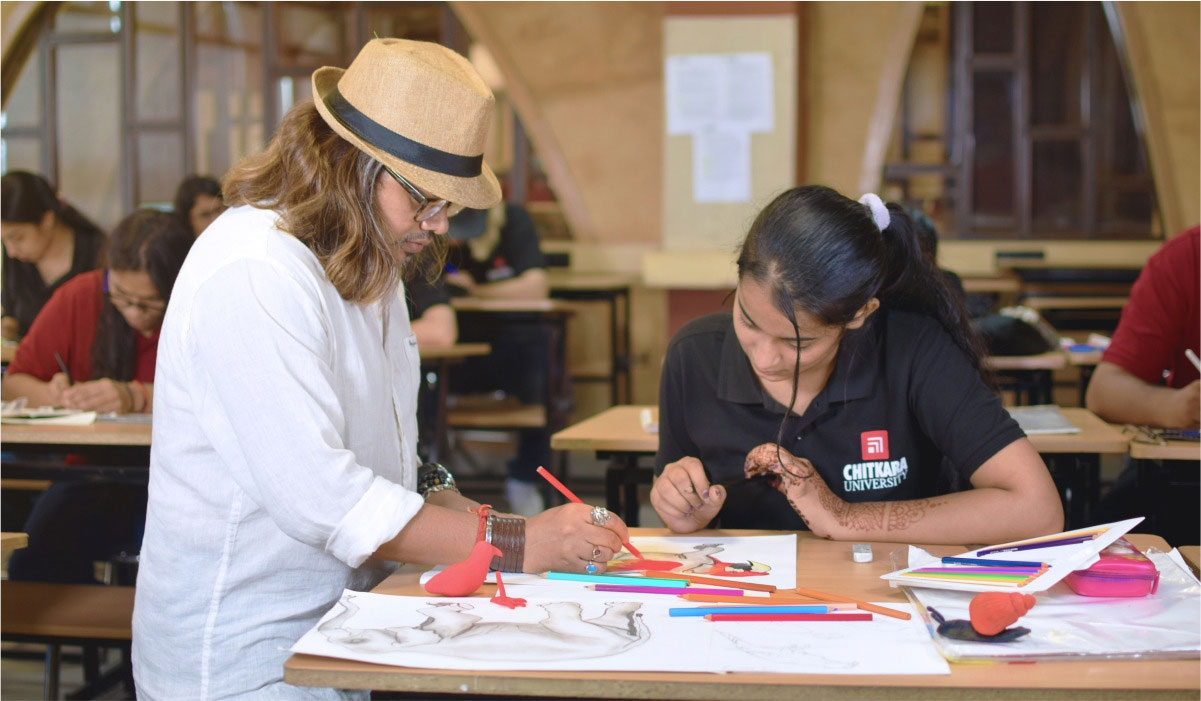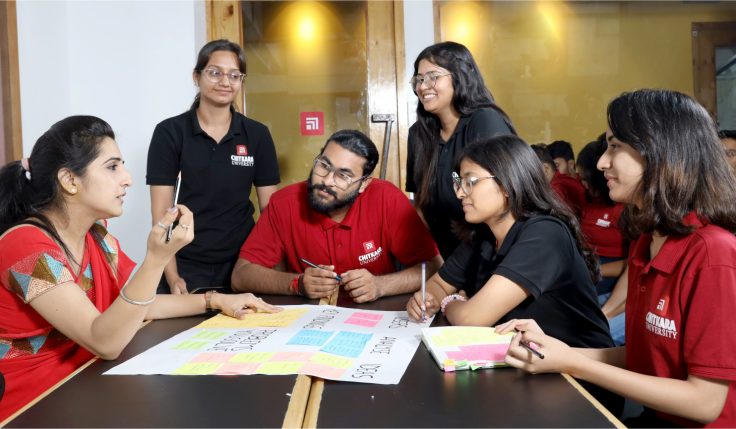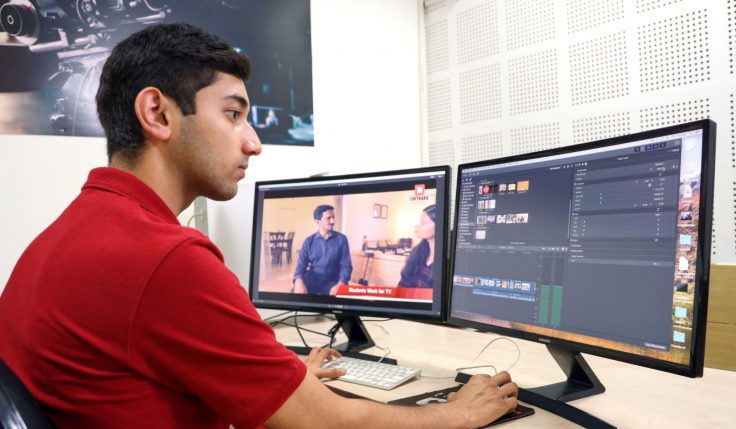Accessibility is considered the practice of designing products, services, and environments that can be used by everyone irrespective of their abilities, disabilities, and preferences. It is not merely a legal requirement but also a moral responsibility for the designers to create an inclusive and diverse experience for their audiences.
What needs to be understood here is that at the centre of all designs, there is an intention to communicate and evoke emotions. Art transcends aesthetics and it must communicate with everyone regardless of the ability of an art form to deliver that message. Inclusive Design ensures a sense of belongingness and unity amongst the audience regardless of their diversity.
In this blog, we will see some of the best practices required for designing to ensure inclusive communication for diverse audiences.
What is Accessibility in Design?
Accessibility in design is the process of creating graphics that can be easy to perceive, understand, and interact with people no matter what their needs may be. This often includes people who have auditory, visual, cognitive, motor, and other impairments along with people who use different devices, languages, or come from different backgrounds.
The concept of accessibility in design explains that there is no one-size-fits-all solution but a flexible approach must be developed that can focus on context, content, and audience for all projects.
Accessibility is not an optional aspect of design but rather an important aspect of it that should be counted from the beginning. There are some prominent reasons why accessibility is considered important for a good design and they are mentioned below.
- Accessibility can increase the reach of a message communicated through a design by making it increasingly available to people.
- It can improve the user experience of a graphic by making it simple to navigate, understand, and even enjoy.
- The inclusion of accessibility in design enhances the reputation of a designer by showing that the designer cares about the audience and their needs.
- Accessibility reduces the risk of legal issues and complaints as it complies with standards and regulations.
- It can foster social inclusion and embrace diversity by respecting the differences of people.
How To Ensure Accessibility In Designing?
There are some points to keep in mind to ensure accessibility in design. Let’s talk about them below.
Recognizing Diversity In Audience: The most important step to keep in mind for designing inclusively is understanding the diverse spectrum of the audience. The design must resonate with people from various cultures, ages, and cognitive abilities.
When you empathize with the unique perspectives of audiences, visuals can be crafted that eventually transcend barriers and bridge connections.
Allowing Collaboration: For creating designs that can touch hearts, it is important to embrace collaborations. When designers work while keeping individuals from different backgrounds in mind including the ones who have disabilities, they can gain valuable insights that shape creation.
What’s more, collaborative efforts also foster an exchange of ideas and pave the way for innovative solutions that can effectively cater to a wider audience.
Also Read: SUSTAINABLE FUTURE: Communication Design – Understanding Responsibilities
Using Design Techniques: Accessibility in design becomes better as the techniques to make a design remain the foundation for an inclusive design. Designers should focus on colourful choices, intuitive layouts, and clear texts to improve readability and comprehension.
The designers should also consider the power of contrast for helping those with visual impairments and prioritize simplicity to ensure ease of navigation.
Embracing Innovation: Embracing modern technology can change how design is managed for accessibility. Technologies such as AR, VR, and voice-controlled interfaces provide many opportunities to engage with diverse audiences.
In addition, artificial intelligence and machine learning can also be used for analyzing user behaviour when it comes to creating personalized experiences that can cater to the specific needs of the audience.
Inclusive Communication for Diverse Audiences:
Designers have an extraordinary ability to combine both form and function while also combining aesthetics with purpose. When designing is done for accessibility, designers get a chance to extend their boundaries of creativity by ensuring that their art touches the lives of wide audiences. This is a collaborative journey that celebrates the beauty of inclusion where knowledge can meet inspiration and innovation can embrace compassion.
When designers work to ensure accessibility, they do not just create attractive visuals but they also make an impact on the lives of people. Each time a person can interact with art, they pave the way for a more inclusive world. It is safe to say that designing for accessibility is not just a trend but it is also a responsibility to the commitment of designers as creators.
Wayfinding and Design Accessibility:
Wayfinding is the process of offering information and visual cues to help individuals navigate through spaces whether indoors or outdoors. It usually involves designing maps, signage, and other visual elements to guide people from one location to another efficiently.
Wayfinding systems are important in complex environments such as airports, malls, hospitals, and urban areas. They reduce confusion and make it simple for people to find their way without getting lost. Wayfinding designs can include features that can help individuals with disabilities ensure they can access and navigate spaces independently.
Let’s see the signs and symbols that make wayfinding a universal experience.
- High Contrast Colours: Using high-contrast colour schemes improves visibility while helping individuals with low vision and colour blindness. The bold color differentiations make information stand out facilitating a clear understanding of directions.
- Clear Fonts: Choosing clear and concise fonts is important for individuals with reading difficulties or visual impairments. Large fonts such as Sans-Serif, Arial, or Helvetica promote easy readability.
- Braille: Incorporating Braille on signage is important for those with visual impairments. Placing Braille text alongside standard information ensures everyone can access similar details independently.
- Raised Lettering and Symbols: The tactile elements including raised letters and symbols offer a physical guide for those who have visual impairments allowing them to feel their way through spaces.
- Pictograms and Icons: Using universally renowned symbols and pictograms can transcend language barriers, aiding individuals who come from different cultural backgrounds and have different cognitive abilities. For instance, the icons representing elevators, restrooms, and ramps contribute to a shared understanding of the environment.
- Symbol Placement: It is important to maintain consistency in the placement of symbols across spaces to ensure predictability so that it helps individuals create mental maps and navigate confidently.
- Audible Signals: The use of audible signals including voice announcements or sound cues can assist those who have visual impairments or cognitive challenges. Auditory information can complement visual elements for a comprehensive wayfinding experience.
- Interactive Maps and Apps: Using technology, interactive apps and navigation apps provide real-time guidance for users. The integration of voice commands and screen reader compatibility enhances accessibility further.
When it comes to designing for accessibility in wayfinding, the goal is to create a setting where everyone can navigate with ease. Employing clear and universally understandable signs and symbols, embracing technology, incorporating tactile elements, and embracing technology can contribute to an inclusive and accessible world.
Examples of Wayfinding Elements Designed for Accessibility
- Accessible Ramps and Elevators: Marked ramps and elevators with accessible buttons that make sure people with mobility challenges can navigate different levels.
- Colour-Coded Paths: Using distinct colours for pathways to help people with visual impairments follow designated routes.
- High-Contrast Signage: It is important to ensure high colour contrast between text and background on signs to improve visibility for individuals with low vision or colour blindness.
- Restroom Signage: Clearly marked and universally recognizable restroom signs including tactile and braille information enhancing accessibility for people with visual impairments.
- Tactile Paving: It is important to include textured and tactile paving surfaces to provide sensory cues for individuals with cognitive impairments indicating transitions or hazards.
Pursuing a Bachelor of Design in Communication:
The program of Bachelor of Design in Communication allows students to go ahead in the vibrant and ever-evolving field of communication design with a globally respected qualification. You can enhance your creative practice with a solid understanding of communication design tips along with the history of communication design.
Chitkara University has many global partners that allow the students of the Bachelor of Design in Communication Design program to experience collaborative teaching, research conferences, and practical training. The program also focuses on the goal of guaranteeing collaborative partnerships that further enhance the prominence of higher education as a field of study for students and academics all across the world.
The focus of the Bachelor of Design in Communication Design is on studio practice as it encourages practical learning and also includes a compulsory internship by which students gain a much better understanding of industry trends and requirements. Students can learn all concepts such as accessibility in design and more to become knowledgeable and skilled in their professions.
To Sum It Up:
A design can be successful when it is capable of communicating a strong message to the audience. The accessibility principles ensure that all bias gets eliminated and minimized. While working on a design project, you must consider the target audience so that you can ensure accessibility in the design.
If you are interested in learning more about accessibility principles then pursue a study program such as a 4-Year Bachelor of Design of Communication Design at Chitkara University. The program teaches students to get ahead in the vibrant industry of design and build successful careers in it.






